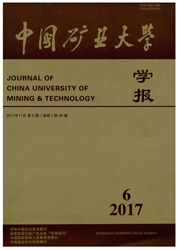

 中文摘要:
中文摘要:
为了开辟后备油气基地,选取南黄海盆地南部坳陷内典型地震剖面进行构造演化分析,并结合成藏要素和成藏条件分析构造演化对二叠系油气成藏的影响,认为晚古生代以来的多期构造演化控制了二叠系油气成藏过程,使研究区东部和中西部发育不同成藏模式.研究结果表明:南部坳陷晚古生代以来共经历了4期构造演化过程;研究区东部二叠系烃源岩仅发生过1次生烃,中西部可能存在2次生烃;油气主要通过断裂和不整合面向周围圈闭运移;古近纪Ed~Es阶段构造活动剧烈,是圈闭的最终定型期,也是早期所形成油气藏的强烈改造时期;主要存在3种有利油气成藏模式.受构造演化和古地温梯度综合控制,研究区东部应重点寻找二叠系自生自储油气藏,而中西部应将二叠系生-中生界储、二叠系生-新生界储以及二叠系自生自储油气藏作为有利类型.
 英文摘要:
英文摘要:
In order to open up hydrocarbon reserve, this paper conducted tectonic evolution a- nalysis of typical seismic section, and analyzed the impact of tectonic evolution on Permian hy- drocarbon accumulation in combination with hydrocarbon accumulation factors and conditions in southern depression of South Yellow Sea basin. And this study concluded that the multiple tectonic evolution controls the hydrocarbon accumulation process from Late Paleozoic Era, which results in different accumulation models between eastern part of southern depression and mid-west part. The results show that: southern depression has experienced a total of four tec- tonic evolution processes since Late Paleozoic Era; Permian source rocks only experience one hydrocarbon generation in eastern part of the study area, while the mid-west part source rocks may have experienced secondary hydrocarbon generation; hydrocarbon migrates to the sur- rounding traps mainly by fracture and unconformity; tectonic activity is intense in Ed-Es stage of Paleogene when all the traps fall into final pattern and reservoirs formed in the early stage are strongly destroyed; and there are mainly three models of favorable hydrocarbon accumula- tion. Controlled by multiple tectonic evolution processes and paleogeothermal gradient, self- generating and self-preserving reservoir of Permian should be considered as the main type in the eastern part, while in the mid-west part it should take three types, including Permian-genera- ting and Mesozoic-preserving reservoir, Permian-generating and Cenozoic-preserving reservoir and self-generating and self-preserving reservoir in Permian as the favorable reservoirs.
 同期刊论文项目
同期刊论文项目
 同项目期刊论文
同项目期刊论文
 期刊信息
期刊信息
